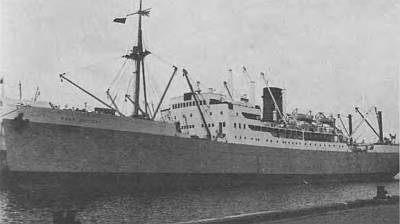- Author
- Millar, Jack
- Subjects
- History - general
- Tags
-
- RAN Ships
- None noted.
- Publication
- August 1972 edition of the Naval Historical Review (all rights reserved)
A sizeable fort was situated on Mudyugski Island at the entrance to Archangel, and at 10 a.m. on August 1, following the failure of negotiations for the fort’s capitulation, orders were received for the ships to open fire. Planes from the Nairana tenaciously pressed home bombing attacks and considerably helped to soften up for the attacking troops. By 8 p.m. the fort had been captured, opening the way to Archangel. Next morning the squadron proceeded up river, sinking two armed icebreakers on the way. After landing troops at strategic points anchor was dropped off the port, to the tumultuous welcome from the cheering crowds which rushed to the waterfront to greet them in a frenzy of acclamation. Everywhere the red flag of the Soviet had been hauled down, and in its place flew the old Russian tricolour, or the Russian naval flag with its St. Andrew’s cross. Planes from Nairana and parties of naval ratings were landed and used to repel Red counter attacks on the city, pending the arrival of troop reinforcements. Later, in consolidating their position, planes flew far and wide in search of retreating Bolshevik troops.
To give even greater range two seaplanes and three 12-pounder guns with sailors from Nairana left Archangel on August 10 on a barge towed by two gunboats manned by sailors from HMS Attentive. Commander Cowan of Nairana set off in a fast motor boat to reconnoitre ahead. They succeeded in advancing well up the Dvina River before winter set in, halting all movement.
After the armistice Nairana was converted back for her peacetime calling at the Devonport Naval Dockyards, and handed over to Huddart Parker Ltd. On arrival in Australia she was immediately placed on the Bass Strait run between Melbourne and Launceston where the ship and her name continued to be even better known in her peacetime career, as a passenger ferry across Bass Strait.

The second Nairana, now better known as the Port Victor, was laid down as a Port Line cargo vessel during the second World War, but taken over by the Admiralty and converted to an escort aircraft carrier.
The second HMS Nairana followed her predecessor in seeking out and destroying the enemy wherever he might be. The ship was converted to an escort carrier (with 20 to 24 planes) in 1943, along with two other ships, HM Ships Campania and Vindex, now the Port Vindex, another regular visitor to Melbourne. Whether battling the Atlantic or the Arctic, or off the Norwegian coast, Nairana’s planes were the seeing eyes of the convoys she was protecting.
U-boats were not the only danger, and many long-range German bombers stand to the credit of her fast nippy fighters. In all her many actions, she was a fighting ship in every sense of the word. Early in 1944, with another carrier, HMS Activity, she set off on an offensive hunting strike into mid Atlantic, accompanied by the Second Support Group – HM Ships Starling, Wild Goose, Kite, Wren, Woodpecker and Magpie under the command of that ace of U-boat killers, Captain F.J. Walker, CB, DSO and three bars.
Disaster almost struck early, and it was only the alertness of the support group which saved Nairana from being torpedoed. U-502 had crept in to close range, but she never survived to tell the tale, going to the bottom under the relentless attack of Captain Walker’s ships.
Joining west-bound convoy SL147 comprising 81 merchant ships, the group was ever on the alert, being right in the danger area. During the day the carriers operated their aircraft from the deep field, spotting, attacking and reporting all U-boats sighted. At night they entered into the middle of the convoy, for they were also live bait – no U-boat commander worth his salt could resist having a crack at a nice big carrier.
During the night of February 8, no less than 26 U-boats were in touch with the convoy, but such was the mauling received from Captain Walker’s group they did not press home their attacks. On that memorable day no less than three U-boats (U-762, U-734 and U-328) went to the bottom following the barrage of depth charges from the second support group. U-424 and U-264 followed them a few days later, making six sunk on the one hunting sortie. Time to splice the mainbrace indeed.




